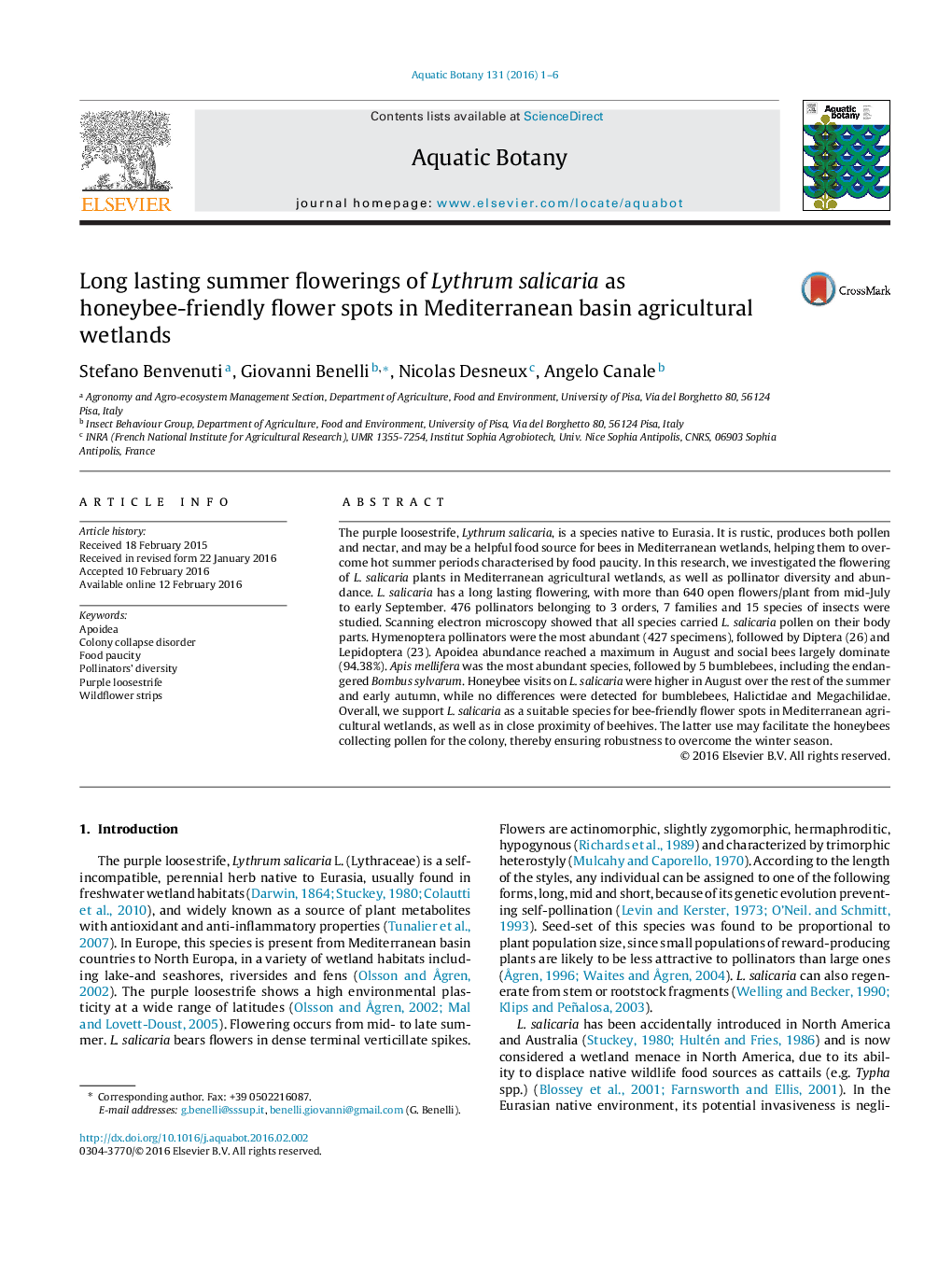| کد مقاله | کد نشریه | سال انتشار | مقاله انگلیسی | نسخه تمام متن |
|---|---|---|---|---|
| 4527593 | 1625811 | 2016 | 6 صفحه PDF | دانلود رایگان |

• Flower spots may help to reduce the pollinator decline in Mediterranean wetlands.
• L. salicaria flowering offer more than 640 open flowers/plant from July to September.
• L. salicaria was pollinated mainly by Apoidea, including endangered species.
• It could be considered for bee-friendly flower spots in Mediterranean wetlands
The purple loosestrife, Lythrum salicaria, is a species native to Eurasia. It is rustic, produces both pollen and nectar, and may be a helpful food source for bees in Mediterranean wetlands, helping them to overcome hot summer periods characterised by food paucity. In this research, we investigated the flowering of L. salicaria plants in Mediterranean agricultural wetlands, as well as pollinator diversity and abundance. L. salicaria has a long lasting flowering, with more than 640 open flowers/plant from mid-July to early September. 476 pollinators belonging to 3 orders, 7 families and 15 species of insects were studied. Scanning electron microscopy showed that all species carried L. salicaria pollen on their body parts. Hymenoptera pollinators were the most abundant (427 specimens), followed by Diptera (26) and Lepidoptera (23). Apoidea abundance reached a maximum in August and social bees largely dominate (94.38%). Apis mellifera was the most abundant species, followed by 5 bumblebees, including the endangered Bombus sylvarum. Honeybee visits on L. salicaria were higher in August over the rest of the summer and early autumn, while no differences were detected for bumblebees, Halictidae and Megachilidae. Overall, we support L. salicaria as a suitable species for bee-friendly flower spots in Mediterranean agricultural wetlands, as well as in close proximity of beehives. The latter use may facilitate the honeybees collecting pollen for the colony, thereby ensuring robustness to overcome the winter season.
Journal: Aquatic Botany - Volume 131, May 2016, Pages 1–6